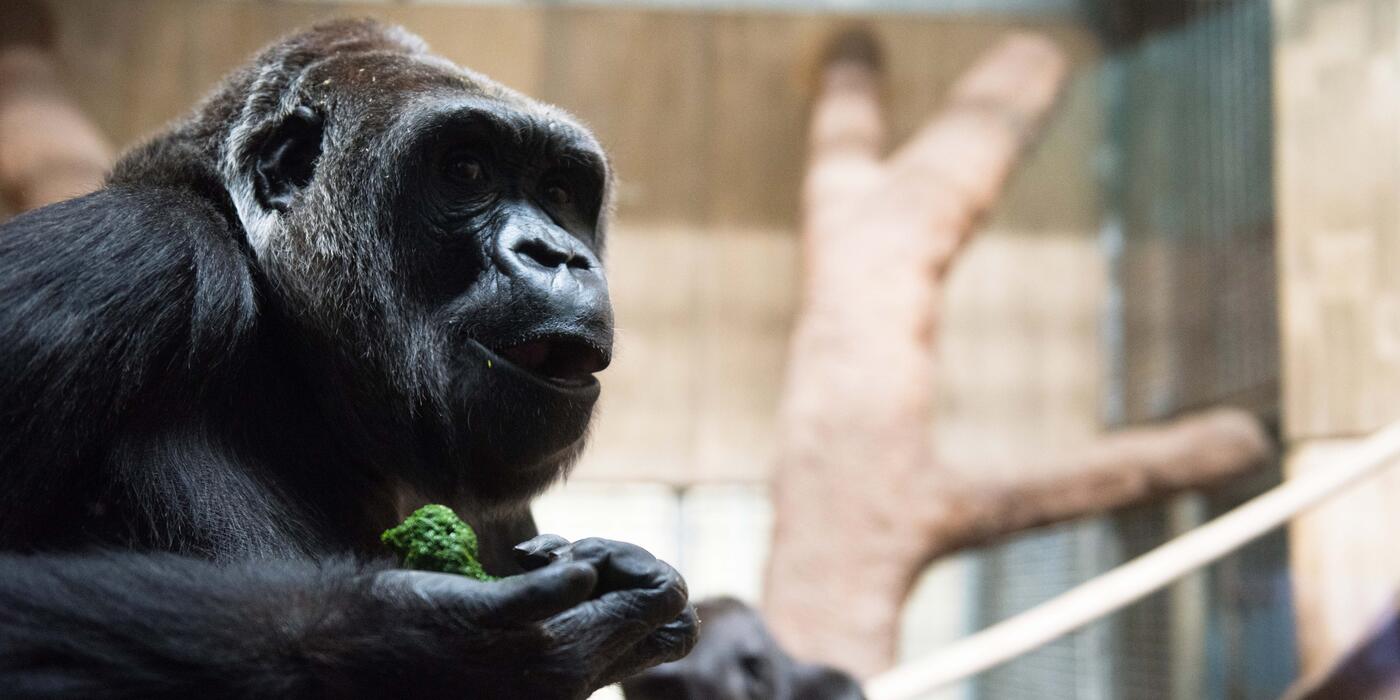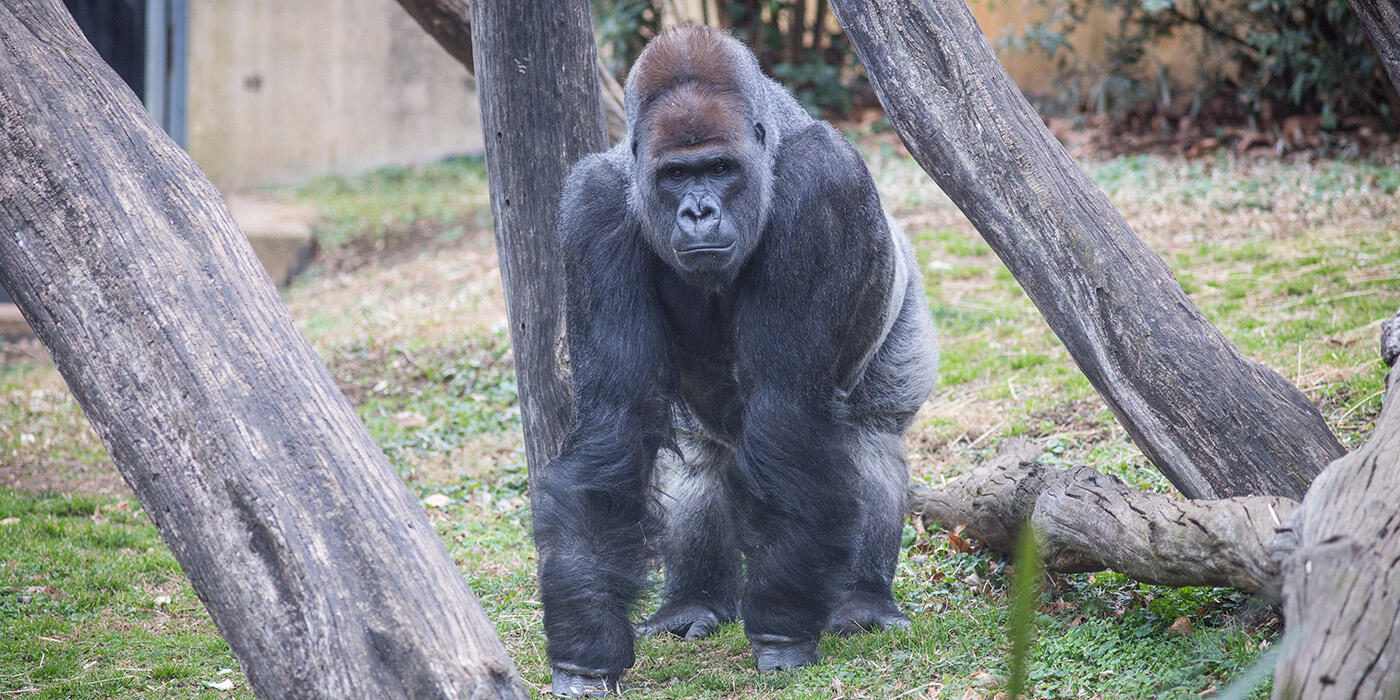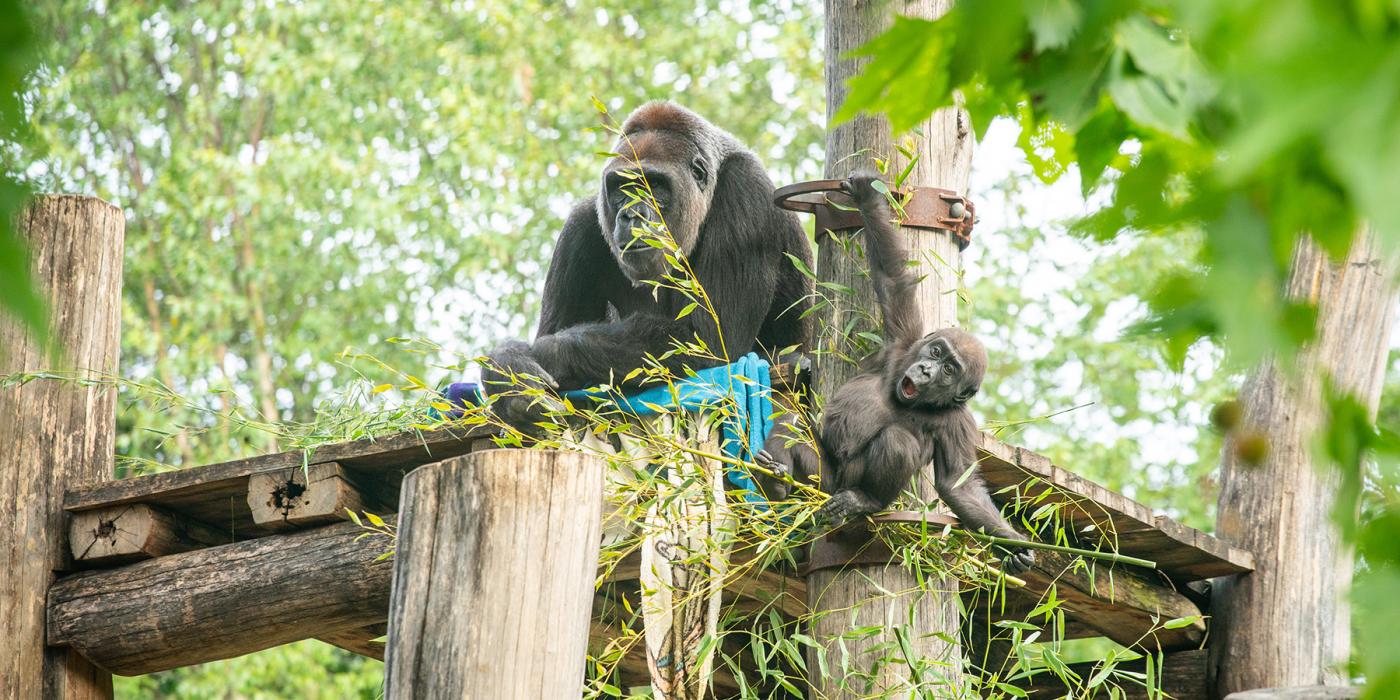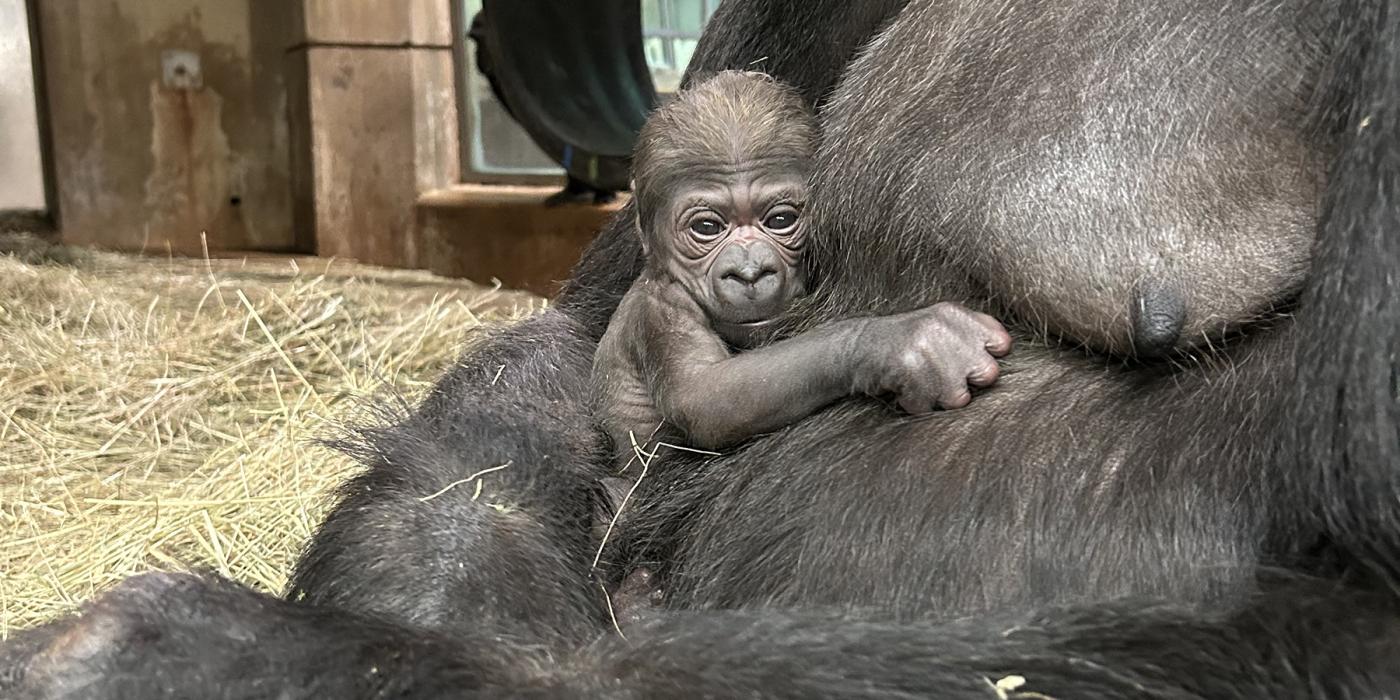#GorillaStory: Nutrition
Primate keeper Melba Brown discusses nutrition for pregnant western lowland gorilla, Calaya, and the significant role of milk for her infant.
The Smithsonian’s National Zoo’s Department of Nutrition Sciences has a dedicated team who works to meet the diverse dietary needs of 1,800-plus animals every day. A balanced diet is essential to animal health, but it is especially critical during a pregnancy and infancy. Keepers and nutritionists have modified pregnant western lowland gorilla Calaya’s diet to accommodate her growing appetite.
“When Calaya was experiencing morning sickness, she ignored her morning gorilla chow for a few days,” says animal keeper Melba Brown. “Chow was one of Calaya’s favorite foods before her pregnancy. Our team had to quickly adapt our tactics to make sure that Calaya was receiving adequate nutrition. We soaked the chow in dilute juice to make it more palatable for her. Since her brief period of morning sickness, Calaya’s dietary preferences have returned to normal.”
In addition to changes in her favorite foods, keepers noticed that Calaya’s appetite quickly increased as her pregnancy progressed.
“Calaya would often consume some cabbage and greens that the other gorillas left behind. When we noticed that she was consuming all of her food and looking for more, we consulted with our staff nutritionist, who increased her diet offering slightly,” says Brown.
As highlighted in a previous #GorillaStory update about maternal training, Brown works on certain behaviors with first-time mom Calaya to increase the likelihood that she successfully nurses her infant. This includes actions like presenting her chest to a mesh barrier for assessment by keepers.
“Breast health assessment is a vital part of Calaya’s husbandry training, as newborn gorillas rely exclusively on their mother’s milk for the first six months of life,” says Brown. “After 6 months, they start to taste and try solid foods, but will continue to nurse for three to four years.”
Should Calaya be unwilling or unable to nurse, the primate team is prepared to offer the infant supplemental formula. Previous milk samples from Mandara (and other gorilla mothers) have been analyzed by the Zoo’s Milk Repository. Scientists study the nutrients, hormones and growth factors contained in milk. The information gained enables the Zoo’s nutrition team to ensure the chosen formula is as nutritionally similar to Calaya’s milk as possible. The repository contains over 15,000 samples from 150 species.
“Once we are certain that the infant is nursing well and Calaya has a copious milk supply, then I will begin training her to participate in our milk repository,” Brown said.
The primary objective for keepers is to make sure that Calaya and her infant are healthy and bonding. Brown notes that they will determine Calaya’s participation in the milk repository based on these factors. She is optimistic that this is a goal they will work toward.Related Species:



